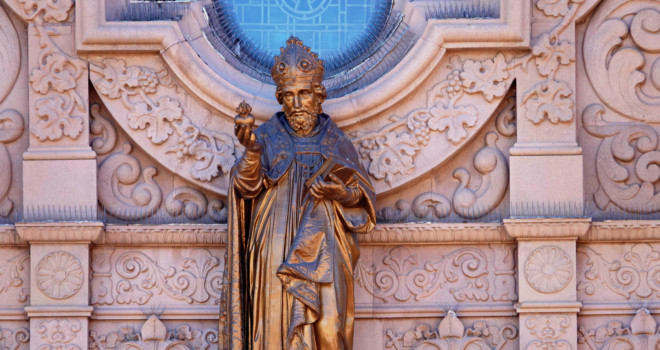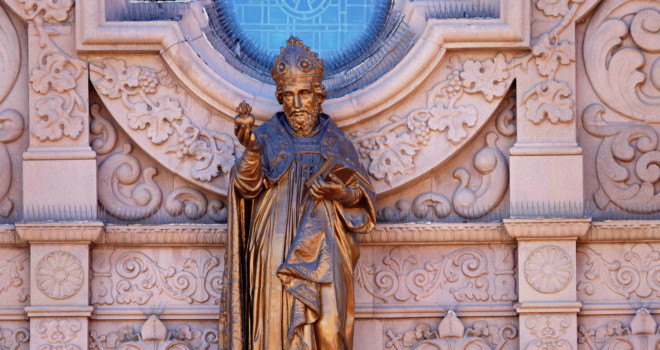Some time ago, when the peace movement on campus was in high gear, I decided to undertake a survey among my students to find out whether the ideal that had so enraptured them was something they truly understood. My classroom question to them was a model of brevity: “What is peace?” A flurry of hands shot up. My students were confident that they were well informed on the subject. Unfortunately, all their answers, though accompanied by confident enthusiasm, were phrased in the negative: “Peace is the absence of war;” “Peace is the avoidance of hostility;” “Peace is freedom from turmoil,” “Peace is the termination of anxiety,” and so on.
While I commended them for their various peace offerings, I suggested that by omitting the positive character of peace, this noble value could be interpreted in contradictory ways. Some people think that peace is nirvana, but this word can mean death, or at least a state of feelinglessness. Is peace a form of anaesthesia? Is peace merely the cessation of pain? If so, why do we long for it? We should want peace to convey something positive, something that improves our lives. We should be concerned about what peace is, rather than what peace is not.
I was hoping that someone would supply peace with a content of its own. The British philosopher Alfred North Whitehead described peace as “a trust in the efficacy of beauty.” Spinoza said that “Peace is not the absence of war: it is a virtue born out of the strength of the heart”. As much respect as I have for these two outstanding thinkers, I regard their contributions to be a bit vague and flowery.
St. Augustine to the Rescue
At last, to make my question more practical, I asked my now silent students what they might do in order to experience the blessings of peace, even for ten minutes. An ominous quiet filled the classroom. Finally, one brave student confessed, rather disconsolately, that given all the assignments she was burdened with and all the deadlines she had to meet, finding peace was out of the question for at least several weeks. I think she spoke for many, if not all, of her classmates. I thought it was sad that a student could not combine peace with her schoolwork. Is formal education a hiatus from peace? Is there peace after graduation? Can we ever find time for peace? Even in sleep, we may be disturbed by recurrent nightmares. If we must wait until we do nothing to find peace, then there is nothing to give peace its ground, nothing that it touches to give our life a higher meaning. Such a peace would sink into a void. This is not the peace we hope for, but the illusion of peace.
There were no incipient St. Augustines in my class. But I could recruit this wise Doctor of the Church for the benefits of my students. For the Bishop of Hippo, peace is the “tranquility of order” (tranquillitas ordinis). Augustine is referring to the personal experience of peace. Human beings have lived disorderly lives ever since they were wounded by Original Sin. Their souls became “restless”. This restlessness (inquietum) created a longing for peace. But peace would always remain elusive as long as it is regarded as a direct object of choice. We cannot choose peace the way we can pluck an apple from an apple tree. We must choose something else before we are eligible to experience peace. That something else, Augustine tells us, is order. But there are many different kinds of order. What is the specific order that this great saint has in mind? It is an order of virtuous acts that lead to God. Augustine’s most celebrated phrase appears in the beginning of his Confessions: “Our hearts are restless and will not rest until they find rest in You,” (cor nostrum inquietum est donc requiescat in Te).
Peace replaces restlessness when our lives are directed to God. We should live in accordance with virtue, which Augustine defines as “the order of love” (virtus est ordo amoris). We now see two things clearly: Why we are restless and desirous of peace; and the solution to our restlessness. If we want peace, we must first direct our love to God. Then we will experience the tranquility of order that is peace.
What is peace, then? It is the tranquility we experience once we direct our love, through virtue, to God. This love, naturally, includes love of neighbor. Therefore, peace is compatible with all of our life activities, including the “burden” of class assignments. We should not be searching for peace, but loving God. Peace is something that “happens” to us when we have found something else. It is very much like happiness which, as Nathaniel Hawthorne has stated, “is like a butterfly which, when pursued, is always beyond our grasp, but, if you will sit down quietly, may alight upon you.”
The Beatles’ famous advice, “Just give peace a chance,” is grossly misleading. As long as peace is regarded as the direct object of our choice, it will remain elusive. Moreover, peace does not “do anything”. The “doing” falls to us who must order our lives to God. Peace is a blessing, but not an activity. It makes no sense to “give peace a chance”.
The primary benefactor of teaching, if properly executed, is usually the teacher himself. My restless students, despite their wayward answers, were a great help to me in better understanding the nature of peace. I wish them all abiding peace. I would be remiss, however, if I failed to express my gratitude to the greatest Christian philosopher of antiquity.
✠












